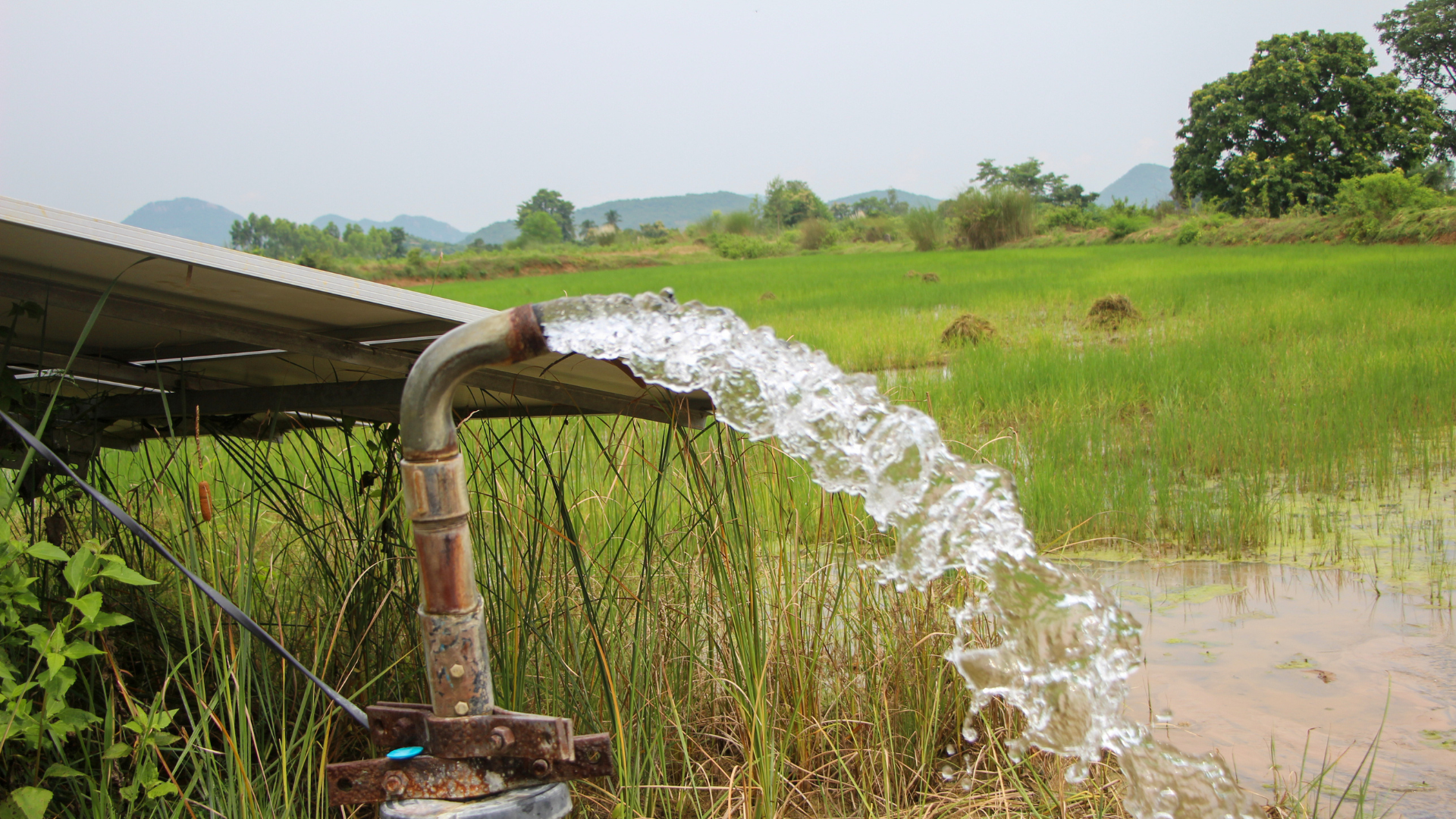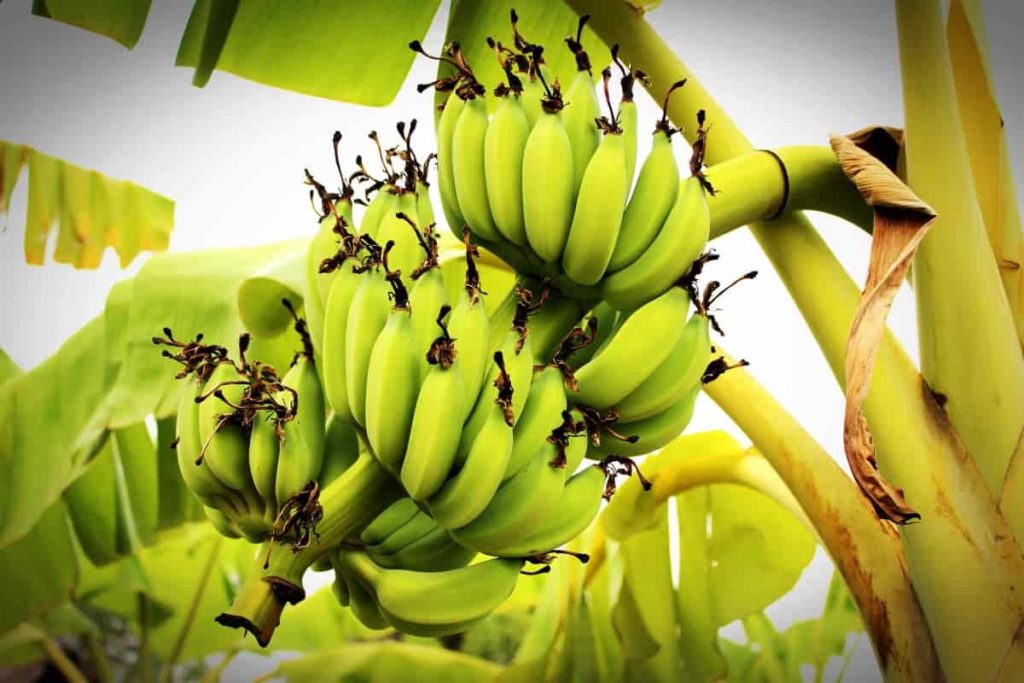Climate Change: Uttarakhand grapples with declining food production
Reduced crop yield and mounting production costs amidst dwindling profits mar the prospects of hill cultivation in the state, with farmers staring at losses.
By Editorial Desk / Dec 14, 2023
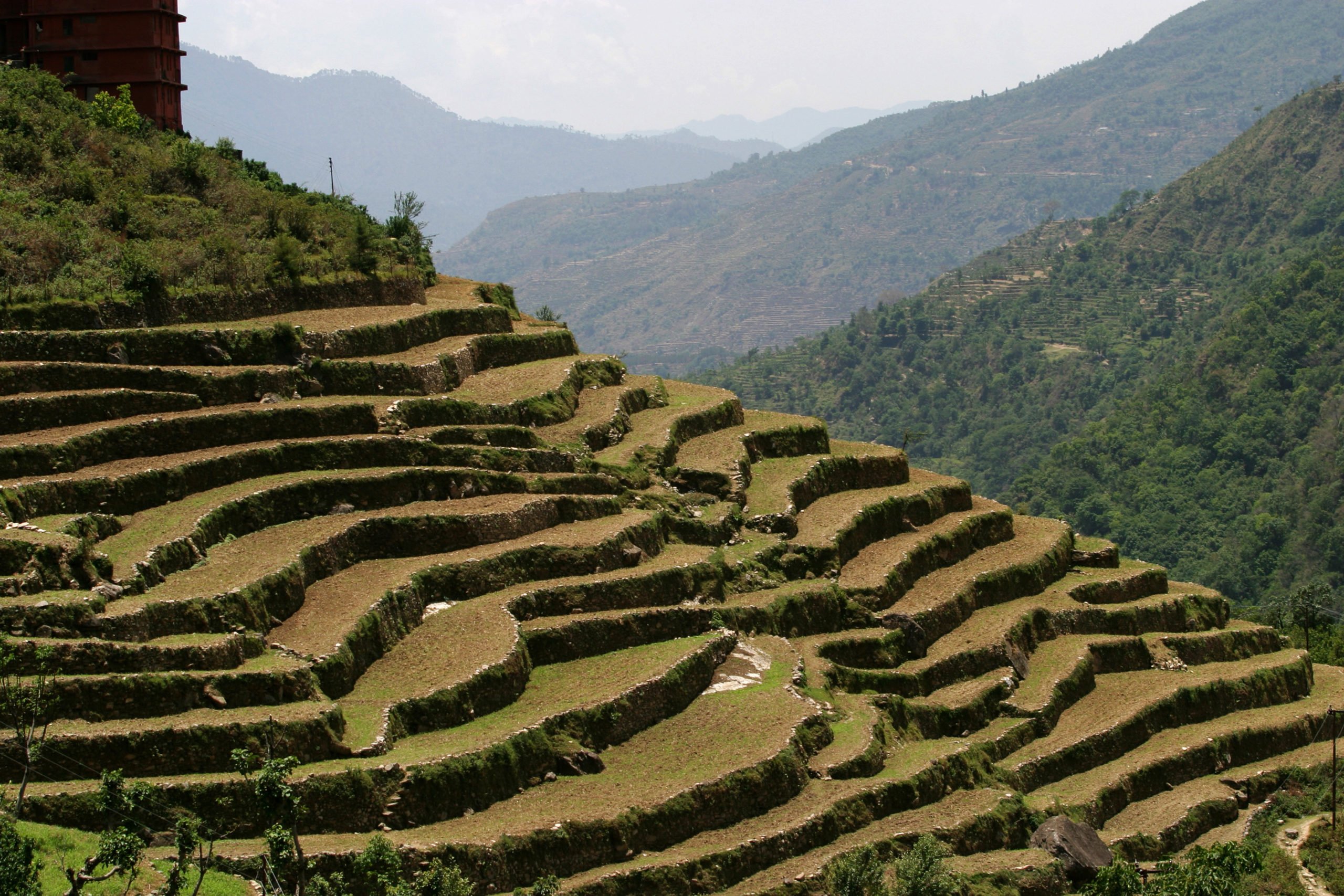
Image Courtesy: The Third Pole
The Himalayan state of Uttarakhand has been in the eye of the ongoing climate crisis for several decades. The state has been battling all possible forms of climate change impacts ranging from flooding to drought to forest fires to name a few. Both slow onset and extreme weather events have declined agricultural productivity in the state. Climate risks coupled with unsustainable development are posing serious threats to the mountain-dependent communities.
Uttarakhand has witnessed a rise of 0.46°C in mean annual temperature between 1911 and 2011 and it still continues to rise at an amplified rate of warming at higher elevations. It is a proven fact that higher altitudes are experiencing more rapid and acute temperature shifts as compared to lower-lying areas. Temperatures in hill districts, such as Uttarkashi, Chamoli, Rudraprayag, and Pithoragarh have increased more substantially than in Haridwar, Dehradun, and Pauri Garhwal.
In the predominantly agrarian state of Uttarakhand, nearly 71% of the population relies on rainfed agriculture, practiced through terrace farming on hill slopes. Reduced crop yield and mounting production costs amidst dwindling profits mar the prospects of hill cultivation in the state, with farmers staring at losses.
Let us take a closer look at how incessant warming in the Himalayas has been disrupting the agricultural practices in the hilly tracts of Uttarakhand.
Shrinking Acreage of Food Crops
Over the last century, there has been significant fall and variability in average annual rainfall in Uttarakhand with hill districts becoming drier. However, high-intensity rainfall extremes of shorter duration continue to loom large. In the last decade, the yield of paddy has decreased due to insufficient rainfall at the time of transplantation while warmer winters have reduced wheat production. Extreme rainfall events erode topsoil productivity and damage standing crops. The area under food grain cultivation in the state shrunk from 970.14 thousand hectares in 2005–06 to 883.93 thousand hectares in 2014–15 with higher altitudes experiencing a larger dip in agricultural production as compared to the plains.
According to a report, reduction in streamflow due to glacier retreat or reduced snow cover has led to reduced water availability for irrigation of crops and declining agricultural yields in several mountain areas. Rising air temperatures increase crop evapotranspiration, thus increasing water demand for crop production to maintain optimal yield.
Declining Apple Production Amidst Soaring Costs
‘Elevation-dependent warming’ patterns in the state lead to changes in the snow line where mountain elevations that were earlier covered with snow may become snow-free. Warmer temperatures in the upper climbs of the Himalayas along with decreasing snowfall and receding snow line have sounded death knell for apple cultivators of Kumaon. Once a leading producer of apples in India, the state has seen a steep decline in apple production from 123.228 tonnes in 2013 to 64.881 tonnes in 2023. Earlier grown at an altitude of 6000 ft, farmers have been forced to shift apple cultivation to higher altitudes (6,500 ft – 7,000 ft) with optimum snowfall. Orange and apricot have also shifted from 4,500 ft to 6,000 ft.
The initial investment for apples has now doubled on account of transportation and labour costs. Rising temperatures have led to a deterioration in the quality of fruits ultimately culminating in lower prices. Hailstorm events in the hills of Uttarakhand are also shifting from March to as late as May which damage fruit crops at the flowering stage.
Varieties of Millets on the Brink of Extinction
The state was once home to a rich repository of agrobiodiversity with over 40 indigenous millets and coarse cereals, many of which are nearing extinction. Repeated crop failures from erratic monsoons and lighter snowfall are discouraging farmers from investing in the cultivation of local millet varieties like foxtail millet and flaxseed. The yield and area under cultivation of finger millets (ragi), barnyard millet and barley have fallen drastically between 2012 and 2021 according to the Department of Agriculture, Uttarakhand.
A. Declining Area of Cultivation of Millets between 2012-2021
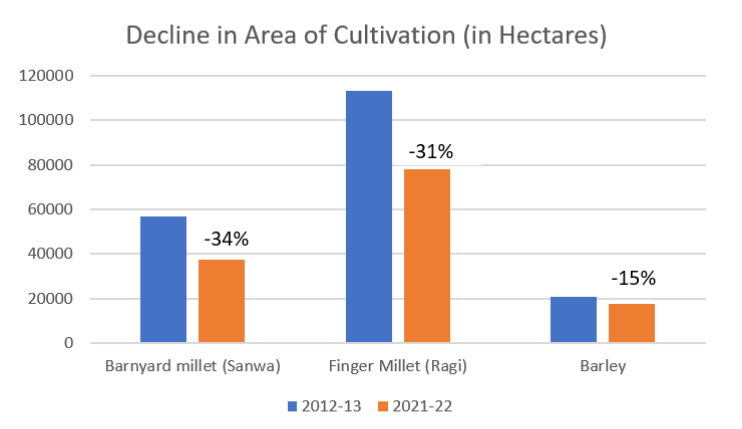
B. Declining Yield of Millets between 2012-2022
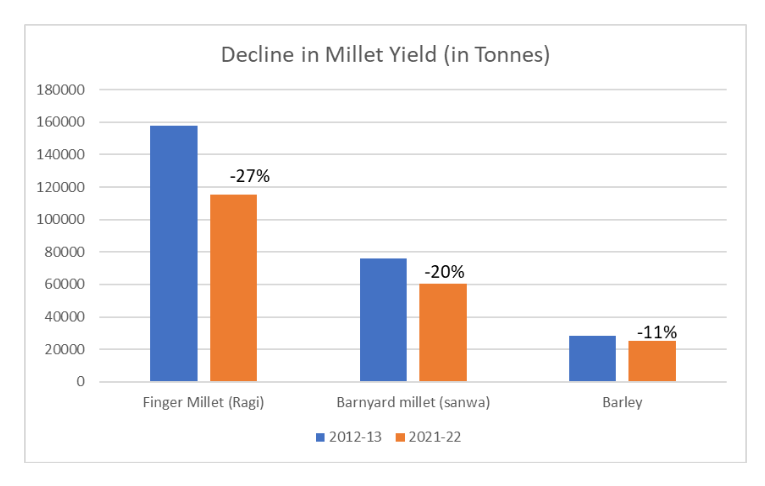
Socio-economic Impacts on Local Communities
The share of agriculture in state GDP has fallen down from 14% in 2011–12 to approximately 10% in 2021 on account of several factors with climate change being the prominent one. Declining profits and growing climate uncertainties have been prompting small and marginal farmers from hilly districts to abandon agriculture and migrate to the plains in the pursuit of alternative livelihoods.
According to a study, farmers in the state are on the verge of experiencing endemic poverty and food insecurity with a whopping 63% of the population remaining food insecure in the hilly areas of Kumaon.
From biodiversity loss to dwindling agricultural productivity and poor living standards - climate change in the recent decades has significantly eaten into the mountain ecosystems of the Himalayas. Experts and scientists have been rooting for nature-based solutions, best practices and investments that build resilience, reduce vulnerability and increase the ability of mountains to adapt to daily threats and extreme climatic events.
Climate Change Food Security Food production in Uttarakhand